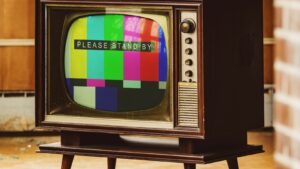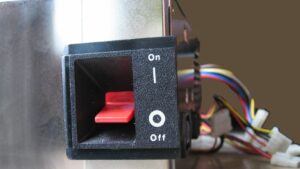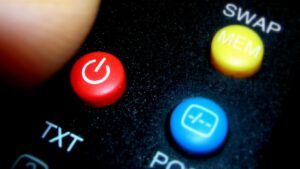Ever wondered if your electronics are sly energy guzzlers, even when they’re switched off? It’s a question that nags many, especially in an age where energy conservation is more crucial than ever.
This article delves into the intriguing world of electronics, exploring whether they continue to consume energy when they’re supposedly off. It’s a journey that promises to shed light on your home’s unseen energy consumption and your potential savings.
So, let’s unravel this mystery together. Are your electronics quietly draining energy or is it all just a myth? Prepare to be enlightened.
Do Electronics Use Energy When They’re Off

Standby power, often referred to as ‘vampire power’, is electricity consumed by electronic devices when they’re not in active use. Even when turned off, some devices keep drawing power. For instance, your television, while switched off, likely still maintains some functions such as responding to a remote control or clock display. Computers, on the other hand, might be in sleep mode, yet they still need power for tasks like system updates and data backup. According to research by the Natural Resources Defense Council, standby power represents about 23% of all residential energy consumption.
Common Electronics That Use Energy When Off
A countable number of electronic gadgets, including televisions, desktop computers, and game consoles, exhibit the trait of consuming energy when switched off. TVs, in instant-on mode, continue consuming minimal electricity to keep the system primed for quick startups. Similarly, desktop computers’ off-phase energy usage hinges on system updates and general maintenance tasks. Count it as 0.5W to 2.5W, according to a study by the Lawrence Berkeley National Laboratory. As for game consoles, a notable example is the PlayStation 4. Maintains that it plies 8.5W while in standby mode in line with the console’s user guide.

Moreover, cable boxes are not to be left out of this list. Serve as home entertainment hubs, they frequently consume above 15W even when not actively in use. Portable phone chargers, often overlooked, drain energy when left plugged in without receiving a charge, which typically uses 0.26W according to the U.S Department of Energy. Ensuring that these electronics fully switch off can result in household energy use reduction, indirectly leading to utility savings.
Measuring Standby Power Consumption
Quantifying standby power consumption involves methodical procedures. It generally starts with the identification of devices prone to vampire power and calculating their usage rates. Measuring tools, such as energy monitors, provide an approximate power consumption level when devices stay in standby mode. For instance, multiple appliances plugged into a power strip incorporate cumulative vampiric power which measures via a singular device. Consistent readings offer an accurate quantification of overall standby power usage.

Beyond utility, these measurements convert into potential energy savings, tying directly into previous discussions surrounding maximizing energy conservation and minimizing utility costs. Undeniably, appropriate measurements result in taking valid steps for reaching the goal. Conducting this calculation, homeowners can confirm suspected power drain and strategize efficient energy-use plans, consequently contributing to reducing their carbon footprint while saving money.
Reducing Standby Power Use
Standby power, or ‘vampire power’, is a significant contributor to residential energy consumption. Electronics like TVs, computers, game consoles, and phone chargers are often culprits, drawing energy even when they’re off. Addressing this issue isn’t just about saving money on utility bills. It’s also about energy conservation and reducing carbon footprints.
The key to tackling this problem lies in understanding and measuring standby power consumption. By identifying devices prone to vampire power and calculating their usage rates, homeowners can plan their energy use more efficiently. Tools like energy monitors can be an invaluable aid in this process.
In the end, it’s about making informed decisions. Knowledge is power, and in this case, it’s the power to save energy, reduce utility costs, and contribute to a more sustainable future.

